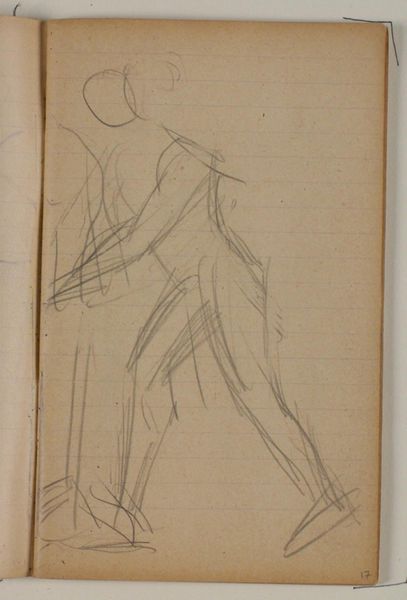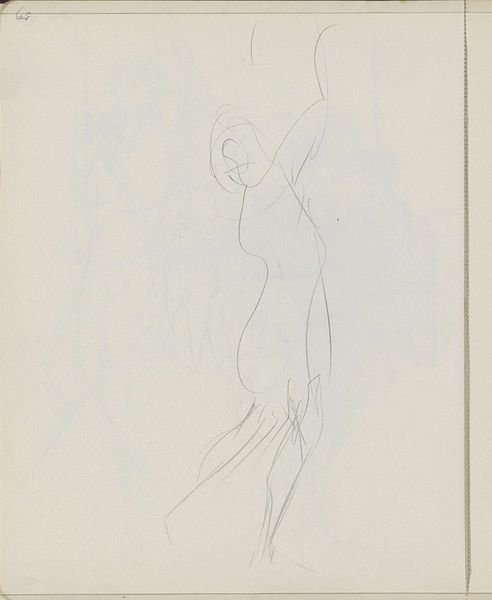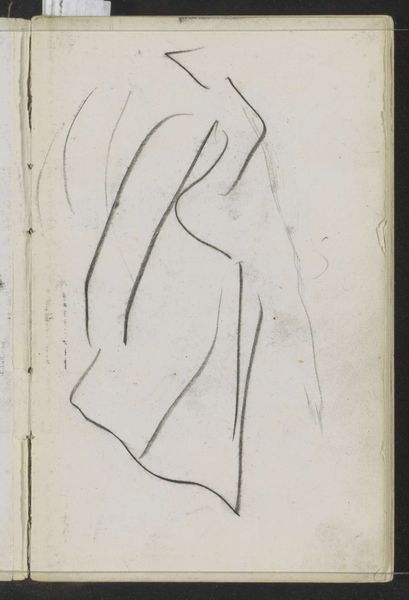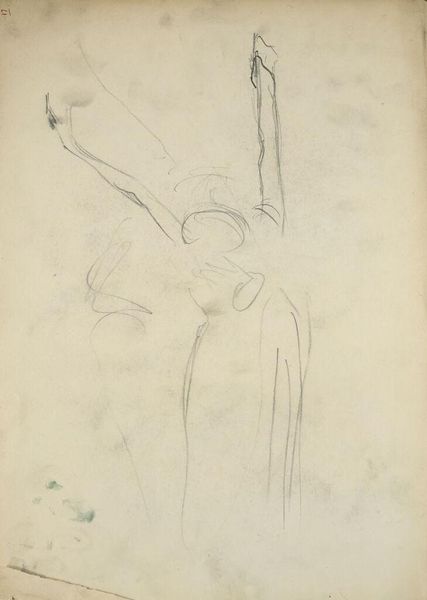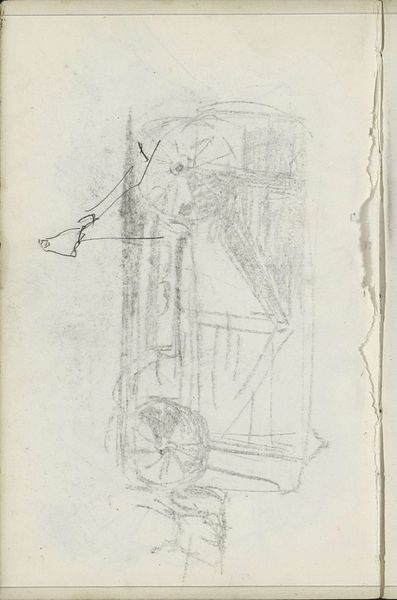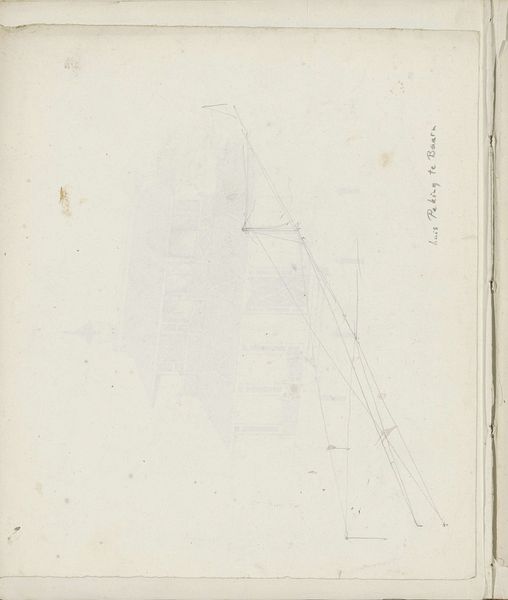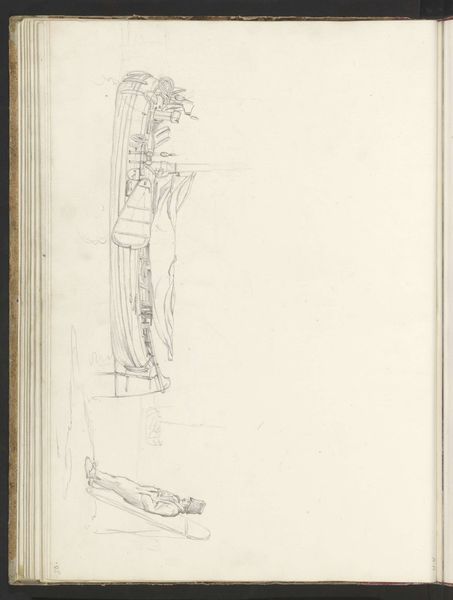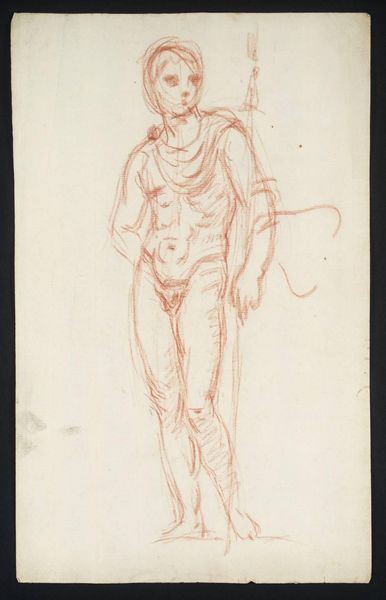
drawing, pencil
#
drawing
#
amateur sketch
#
toned paper
#
light pencil work
#
pencil sketch
#
incomplete sketchy
#
figuration
#
personal sketchbook
#
ink drawing experimentation
#
pen-ink sketch
#
pencil
#
sketchbook drawing
#
academic-art
#
nude
#
sketchbook art
Copyright: Rijks Museum: Open Domain
Curator: Here we have "Standing Nude Woman with One Arm Raised", a pencil drawing by Reijer Stolk, dated sometime between 1906 and 1945. It's part of the Rijksmuseum collection. What's your first take? Editor: Ghostly. Ethereal, even. It's barely there, this figure. Just the faintest whisper of a human form on what looks like toned paper, like she's about to fade back into the void from whence she came. Curator: Interesting. The "barely there" quality speaks to its function as a sketch. We see the underlying grid, the artist's framework. This isn't about polished presentation; it's about the labor of observation and construction. Stolk is working through the challenges of depicting the human form. Editor: Absolutely. It feels deeply personal, like stumbling across a page in the artist's private sketchbook. A quick study, perhaps, before tackling a more formal work. It’s got a raw, almost vulnerable quality because of that. Did many academic artists use nude sketches as studies? Curator: Absolutely. Nude studies were fundamental to academic art training. It honed the artist's understanding of anatomy, light, and form. But the economic realities also factored in. Drawings like this were often produced as teaching aids for other artists to learn figure construction without commissioning costly paintings or sculptures. Editor: So it's both a learning tool for the artist and potentially a resource for others. I like that connection. It reframes the artwork less as a piece of aesthetic brilliance but one small link in a whole chain of artistic knowledge sharing. Curator: Precisely! It decenters the individual genius and puts the emphasis on the communal nature of artmaking and transmission. What's also remarkable is the light pencil work. The economy of lines conveys the essence of the figure. It’s more about suggestion than rigid definition. Editor: The unfinished nature is also compelling. The figure is cropped, seemingly arbitrarily. Are we, as viewers, implicated in this artistic exercise, meant to imagine what extends beyond the frame? It really draws you in. Curator: It definitely provokes contemplation. Looking at this through a material lens reminds us that even a simple drawing involves labor, resources, and a network of exchange. Editor: Yes. I come away feeling a sense of quiet intimacy with Stolk, observing his practice through time. Almost a little peek behind the curtain into an artist’s everyday struggle, their dedication.
Comments
No comments
Be the first to comment and join the conversation on the ultimate creative platform.

